ROLLING FRICTION:
The Complete Guide

If you are surfing the web for in-depth knowledge on ROLLING friction, then you NEED this guide.
Why?
Well, It covers everything you need to know about rolling friction in one single article.
With simplified definitions and explanations, it is packed with illustrative diagrams to enhance understanding.
Bottom line:
If you want to get the most out of rolling friction, you’ll love this guide.
Contents
CHAPTER 1
ROLLING FRICTION: Definition and Explanation

What is rolling friction?
Rolling friction is the friction force that resists the motion of a rolling object on a surface.
It is the friction that exists between the contact surface of rolling object.
Rolling friction is also called rolling resistance or rolling drag.
The force applied on an object must overcome the rolling friction before an object can roll.
When an object at rest is rolled against a surface, the friction force in action changes from static friction to rolling friction.
For instance;
Consider a ball rolling in the forward direction as shown below.
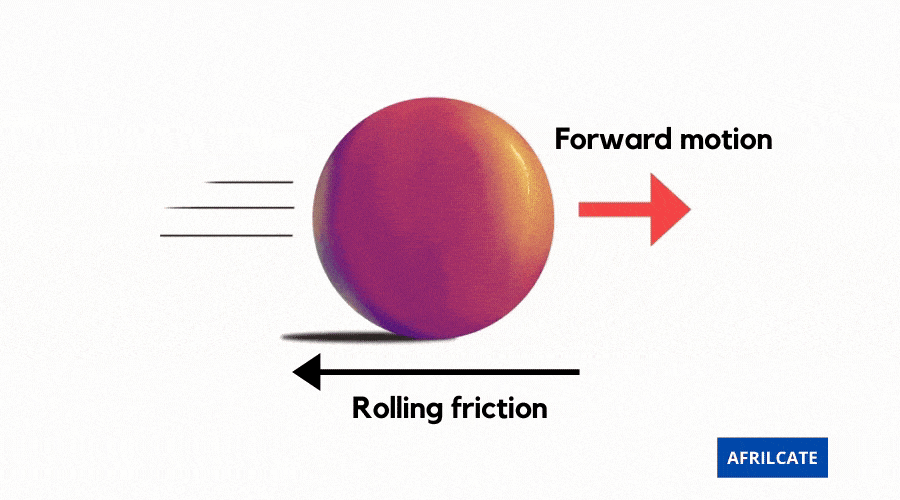
Rolling friction exists at the point of contact between the ball and the surface beneath.
This friction opposes the forward motion and tries to bring the ball to a complete stop.
To maintain this forward motion, the rolling force of the ball must be greater than the rolling resistance.
You should know that friction is a contact force and it always act in the opposite direction to motion.
By contact force, it means that friction only exists between surfaces that are physically in contact.
Since the point of contact between the rolling object and the surface beneath is small, rolling friction offers the least resistance to motion when compared to static and kinetic friction.
CHAPTER 2
Examples of Rolling Friction

Examples of Rolling Friction
All rolling object encounters rolling friction when tossed against a surface.
Some examples of objects that experiences rolling friction includes:
- Ball bearings
- Car tires
- bike tires
- Skateboard tires
- Rolling paint brush
- Lawn tennis
- Office chairs with rollers
- Bike wheels
- Trolley tires
- Bowling ball
- Golf ball
- Antiperspirant roller
- Soccer ball, basketball, or baseball
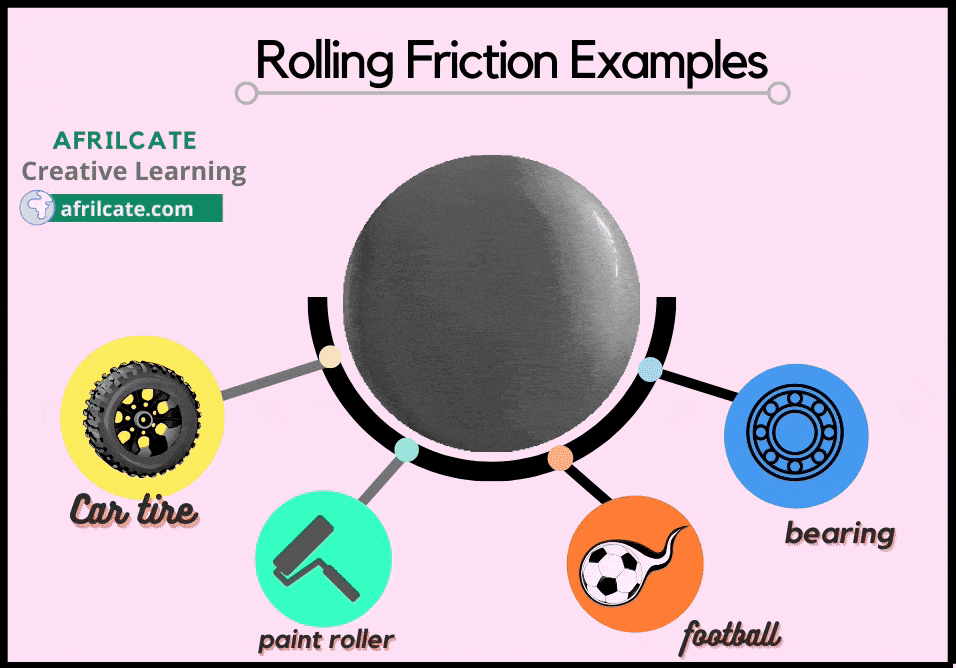
4 (four) examples of rolling friction
LEARN MORE: Still curious, see our article: Detailed Examples of Rolling Friction
CHAPTER 3
Factors affecting Rolling Friction
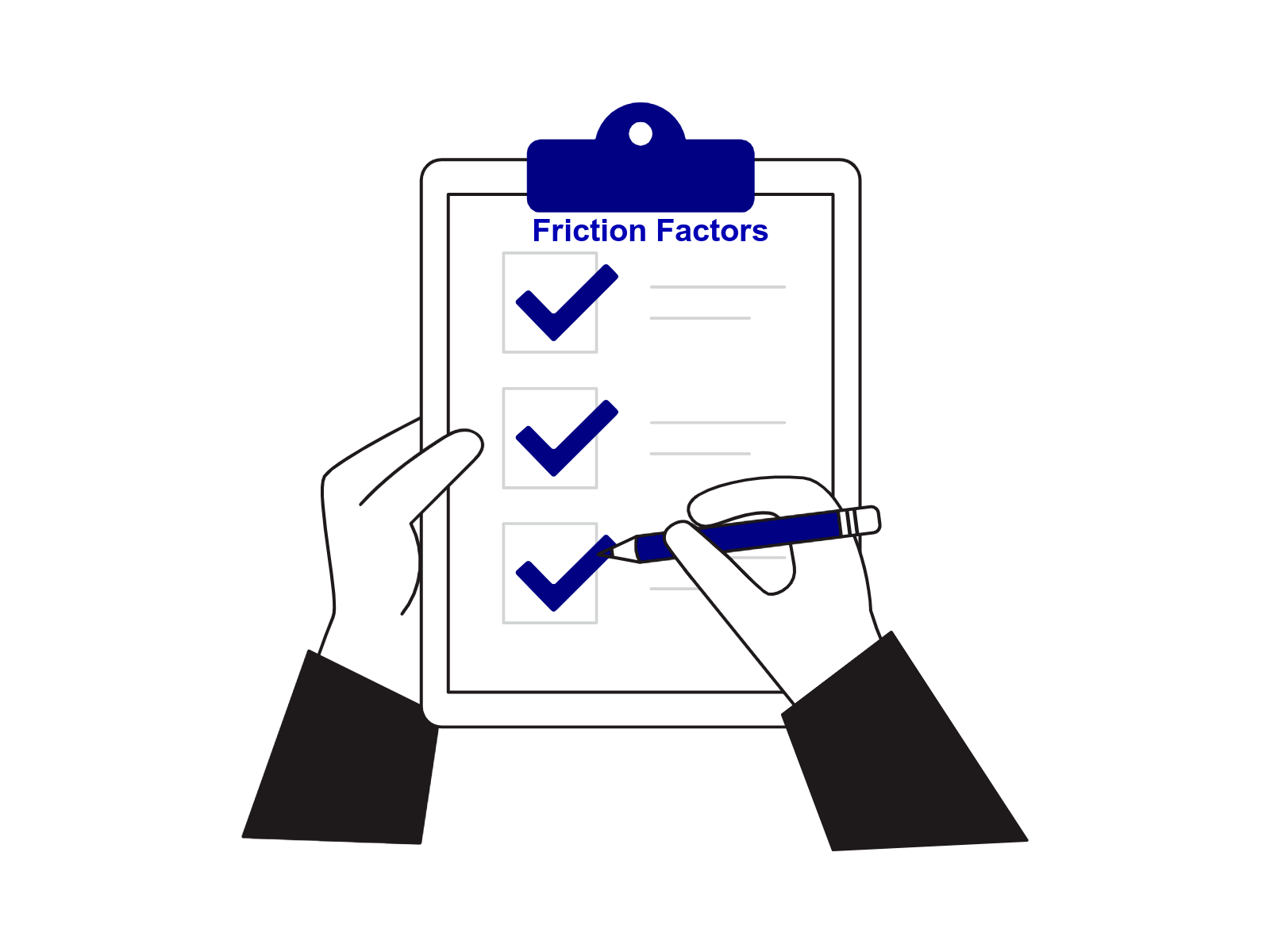
Factors affecting rolling friction
These are various factors that affect rolling friction.
They include:
- Surface Irregularities
- Nature of the surface on which the object is rolling.
- The shape of the rolling object
- Material type of the rolling object and the surface
- The weight acting on the wheels
- Roller or wheel diameter
- Surface Adhesion
- Thickness, shape, and orientation of thread on tires
- Deformation of the object or of the surface.
- Coefficient of rolling friction
Let’s quickly look at how these different factors affect rolling friction.
SURFACE IRREGULARITIES
The surface upon which an object rolls and the object itself is perfectly not smooth.
No matter how smooth a surface might appear, it still contains traces of minute rough planes or unevenness.
This unevenness might not be visible to the human eyes due to its tiny proportion but can be detected with a microscopic lens.

Microscopic view of the contact surface between the ball and the table
The tiny rough planes are called surface irregularities.
The interlocking of surface irregularities hinders the motion of rolling objects and gives rise to rolling friction.
Nature of the surface upon which the object rolls
The degree of surface roughness or smoothness affects rolling friction.
On rough surfaces, there are a larger number of irregularities.
So the rolling frictional force is greater if the surface is rough.
A ball rolling on a smooth surface will encounter lesser rolling resistance compared to a ball rolling on a rocky surface.
Sticky surfaces also increase rolling resistance.
The shape of the rolling object
Compare these two objects below;
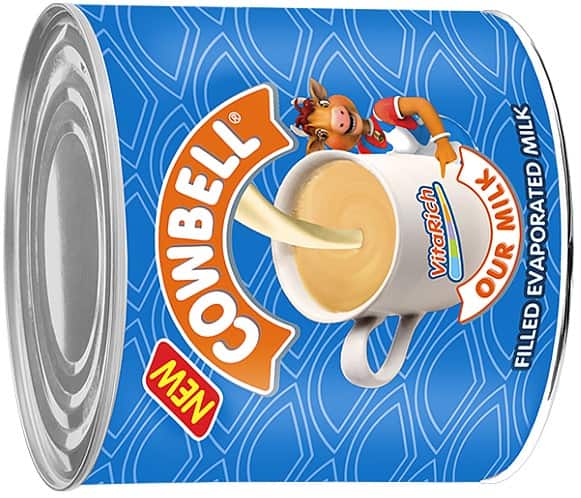

The first one is a milk tin which is cylindrically shaped and the other is a spherical ball.
Now,
Which of these two objects will travel lesser distance when rolled on a given surface under the same environmental condition and with the same applied force?
The tin will quickly come to a stop and won’t travel as much distance as the ball.
Reasons;
- Spherical shapes are perfectly streamlined to continue rolling after the motion is initiated.
- For the tin milk, there is a greater surface area in contact in contact with the ground.
This larger contact area increases the chances of asperity interlocking and adhesive bond which hinders motion.
Since the surface contact area of the ball is small, the rolling resistance or friction acting on the ball is minimal.
So we can boldly say that the shape of an object is one factor to be considered when discussing rolling friction.
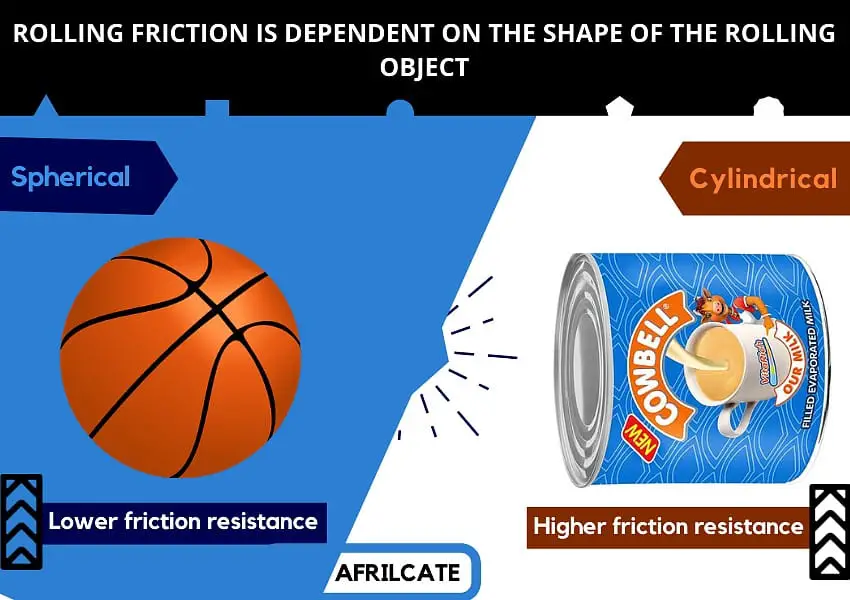
While some object shape creates a lot of friction drag, others make it easier to maintain motion.
Material Type of the rolling object and the surface
The material type also affects rolling friction.
Rubber tire on a paved road will have higher rolling resistance than a steel railroad wheel on a steel rail.
Riding a bicycle with rubber wheels on sand will give more rolling resistance than concrete.
Adding different filters and polymers in tire composition can improve traction while reducing energy loss.
The use of exotic materials including nano-clay has been shown to reduce rolling resistance in high-performance rubber tires.
The weight acting on the wheels
The weight of the object is directly proportional to rolling friction.
It determines the degree of the material deformation.
The normal force acting on the object depends on the weight of the object.
If the surface is flat, the normal force acts in opposite direction to the force of gravity.
A greater weight pushes the surfaces together, leading to an increase in contact surface and a greater friction resistance.

From the photo, the pressure on the tire is increased due to the weight of the calf.
This added weight increases the rolling resistance making it difficult for the boy to roll the tire.
Therefore, an increase in object weight will lead to a corresponding increase in rolling friction due to increased pressure.
And a reduced weight will cause a decrease in rolling friction.
Roller or Wheel Diameter
The roller or wheel diameter affects rolling friction and there are two rules to back up this statement.
The 1st rule proposed by Coulomb in 1785 says that “rolling resistance is inversely proportional to the diameter of the wheel”.
This rule is known as Coulomb’s law.
The 2nd rule proposed by Dupuit in 1837 says that “rolling resistance (of wheeled carriages with wooden wheels and iron tires) is approximately inversely proportional to the square root of wheel diameter”.
This rule opposes Coulomb’s law and has only been experimentally verified for some certain carriage wheels.
Regardless of the dispute between both laws, we can still clearly see a matching correlation between a wheel diameter and rolling friction.
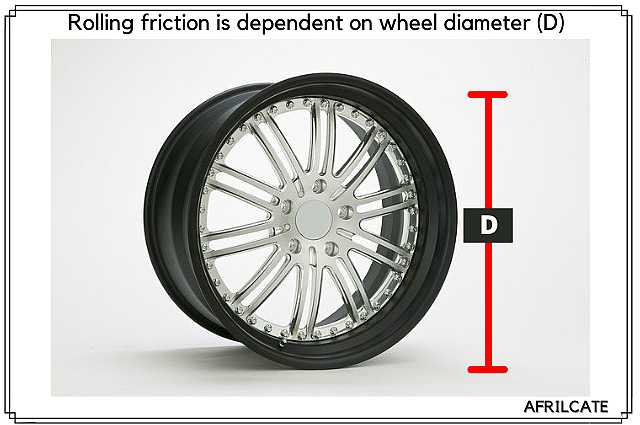
Surface Adhesion
Adhesion is the force of attraction between molecules of different substances.
Adhesive force contributes in gripping rolling bodies to avert motion.
Rolling objects possess the least adhesive force when compared to static and kinetic friction.
This is because of the low contact area and reduced molecular interaction with the surface when the object is rolling.
Thickness and orientation of tread on tyre
In tires, tread thickness, shape, and orientation all affect rolling resistance.
The thicker and more contoured the tread, the higher the rolling resistance.
Regular tires are designed with tread to keep a car stable and safe in different road conditions.
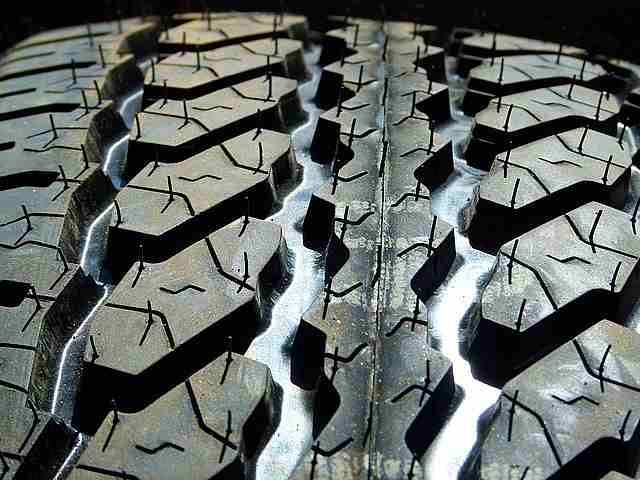
Tread patterns also allow the tire to dig into the ground’s surface for better grip and offers better traction when driving on sand, dirt, or mud.
When you drive on tires for a while, the tread will start to wear away.
When the thread depth is worn below the critical level, you won’t be able to maintain effective road contact.
At this point, the brakes won’t function effectively since the rolling friction is reduced.
The question is:
Tread tires or smooth tires?.. Which is preferable in considering the rolling resistance?
Well, it depends on the surface condition.
Tread tire is far more suitable for wet surfaces.
They are designed to remove water from the contact area through the grooves, thereby maintaining road traction in wet conditions.
On the other hand, smooth tire also known as slick tires are suitable for dry condition.
They provide far more traction than grooved tires on dry roads, due to their greater contact area.
Slick tires provide the largest possible contact patch to the road which is required to maximize traction in smooth roads. They are used in auto racing.
The tires of common road vehicles are designed with tread to operate in different weather conditions.
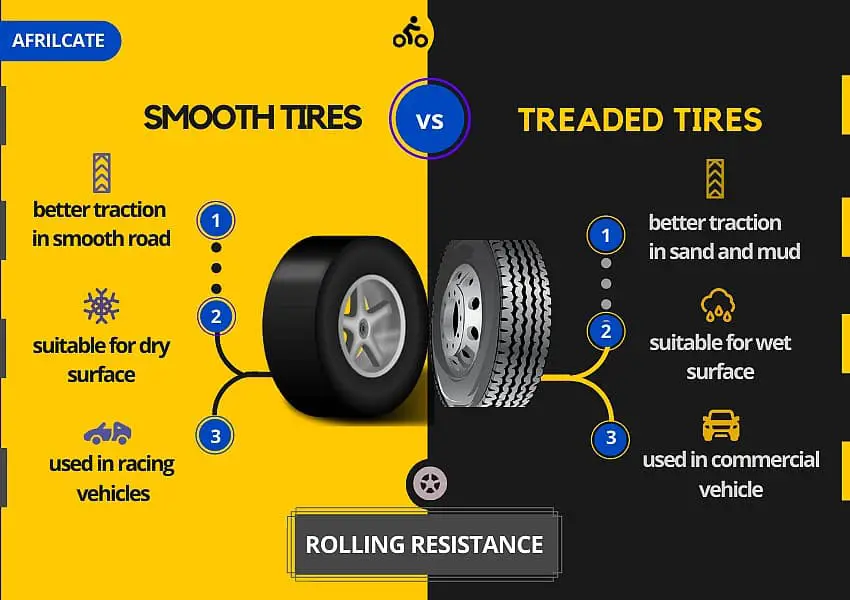
The surface traction is directly proportional to rolling friction.
High surface traction yields high rolling friction and vice-versa.
Deformation of the object or the surface
Rolling friction is mainly caused by non-elastic effect which arises from material deformation.
Rolling objects experiences repeated cycles of deformation and recovery.
For deformable materials like rubber, the energy of deformation is greater than the energy of recovery.
This energy loss is dissipated as heat and gives rise to hysteresis.
A highly deformable material will encounter more rolling friction and more energy will be lost.

Coefficient of rolling friction
The coefficient of rolling friction denoted as µk.r is a system property.
Coefficient of friction is a numerical value that quantifies the intensity with which two sliding or contact surfaces grip each other.
The rolling friction coefficient is a measure of the rolling resistance of an object against a surface.
A high coefficient of rolling friction indicates high rolling resistance between the given contact surfaces.
Since the rolling friction force is smaller than kinetic and static friction force, the coefficient of rolling friction also possesses the least value.
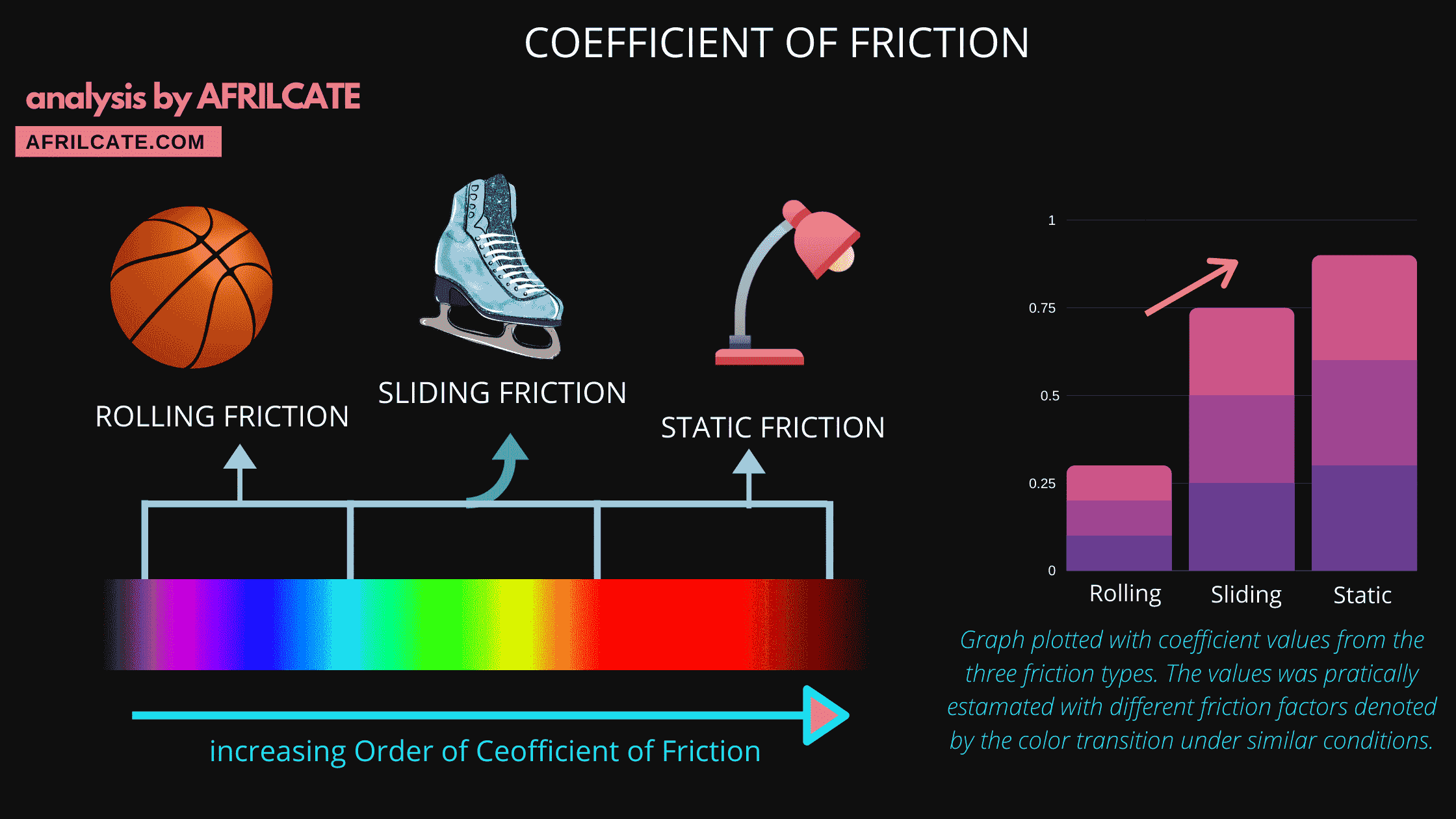
Graph plotted with coefficient values from the three friction types.
The values were practically estimated under similar conditions. These conditions are denoted by the color transition in each column of the friction coefficient plot.
want to see a comprehensive list of rolling friction coefficient of different materials and surfaces?
Check out our article: The coefficient of rolling friction (fully explained)
CHAPTER 4
Calculations on Rolling Friction

Calculations on rolling friction
The formula for rolling friction is given as the product of the coefficient of rolling friction and normal force.
|
Fk,r = µk,r N |
Where,
- Fk,r is the force of rolling friction
- µk,r is the coefficient of rolling friction
- N is the normal force, sometimes it’s denoted by η
Normal force has the same magnitude as the weight.
It’s represented by the equation; N = m x g
If the object or plane is inclined at an angle (∅), the normal force becomes:
N = m gcos∅
Where m = mass of the object.
And g = acceleration due to gravity.
F and N are measured in units of force (such as Newton or pound).
Since friction is a force, the unit of the frictional force is the newton (N).
The coefficient of rolling friction is unitless.
Example
A loaded trolley pushed on a wooden floor with μk,r = 0.2 has a mass of 40 kg.
What is the rolling resistance? Take g = 9.81m/s2
Solution
Fk,r=μk,r N
Normal force, N = mg
Coefficient of friction, μ k,r= 0.2
Fk,r=μk,r x mg
Fk,r= 0.2 x 40 x 9.81 = 78.48 N
TEST YOUR KNOWLEDGE
Consider a car tire rolling on a smooth horizontal surface.
Given N = 806 N and
Fk,r = 1.38 N, the coefficient of the rolling friction is:
a.) 0.0130
X wrong!!
b.) 0.0017
✔ Correct
c.) 0.020
X wrong!!
d.) none of the above
X wrong!!
SHOW SOLVING
The correct option is b. 0.0017
Fk,r = µk,rN
µk,r = Fk,r/N
µk,r = 1.38/806 = 0.0017
CHAPTER 5
Rolling Friction in Action

Let’s wrap this up by looking at some real-life case studies of rolling friction in action.
There are various examples of rolling friction in action in everyday life.
- A soccer ball kicked across a grassy field will travel lesser distance due to high rolling friction compared to one kicked across a smooth or less grassy field.
- A loaded shopping trolley will be much more difficult to push compared to an empty cart as a result of greater rolling friction.
- Bike wheels that are thicker will lessen the potential speed of the bike because there is a greater wheel surface to create friction against the surface and this will slow the bike.
- Rollerblades have lesser rolling friction than roller skates because there is lesser surface-to-wheel contact on rollerblades.
- A basketball rolled on the court will eventually come to a halt because of rolling friction caused by the surface traction.

Rolling friction in action
FRICTION FACT
Rolling friction and kinetic friction are quite similar.
Apart from the fact that rolling friction has a lower frictional force, another difference between rolling friction and kinetic friction stems from the fact that kinetic friction is much more difficult to measure.
Now It’s Your Turn
Phew! I put A TON of work into this guide.
So I hope you enjoyed it.
Now I’d like to hear what you have to say.
Are you conversant with other friction types or would you like to see more articles like this?
Can you think of any other example of rolling friction in action?
Let me know by leaving a comment below.









Hey bruh 11th grader here really enjoyed the learning the article.this is pretty cool way to learn i wished teacher did em too but you’re gooood . Just askin it’d be cool if u included the pros n cons of rolling friction too😚